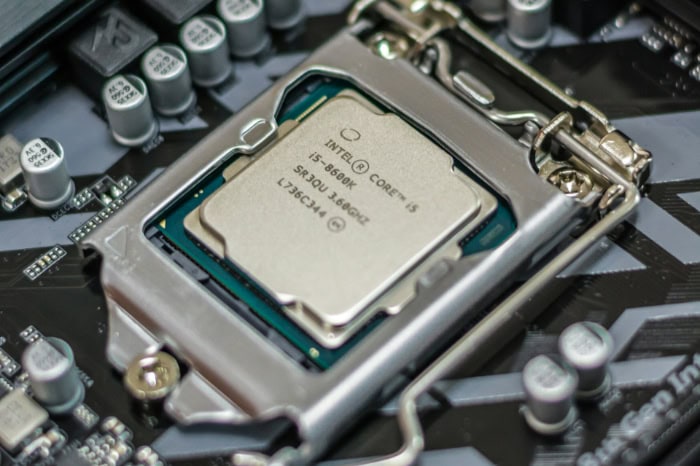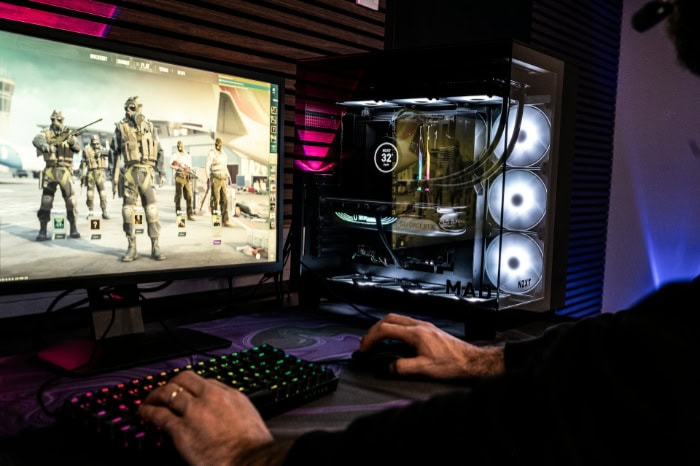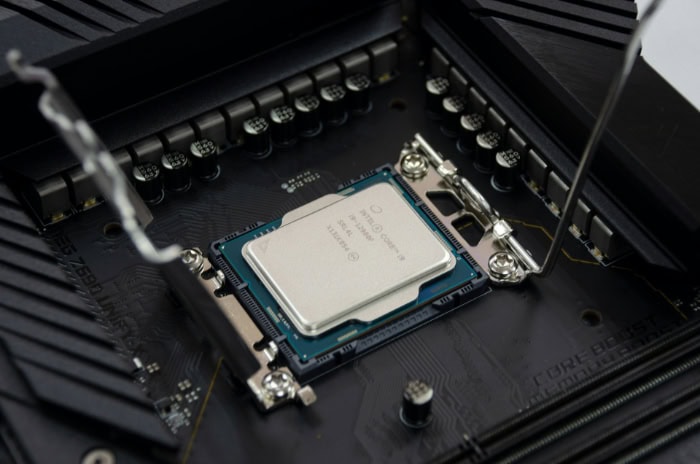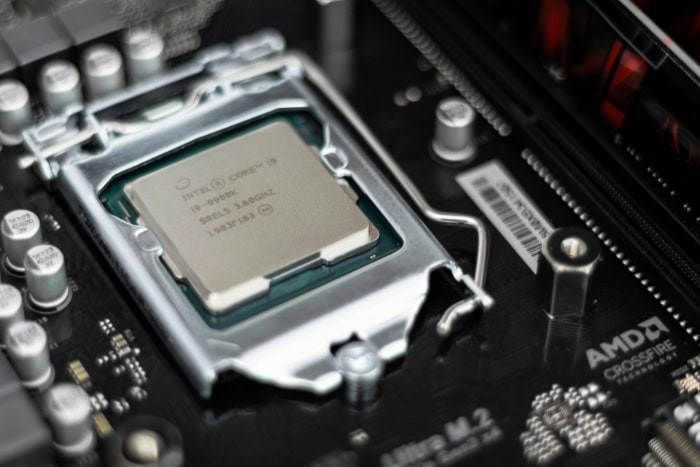Intel Core i3 vs. i5 vs. i7 vs. i9: Which Tier Fits You?

The processor is the heart of any computer, driving everything from simple tasks like web browsing to demanding activities like video editing or competitive gaming. Intel’s Core i3, i5, i7, and i9 processors have become household names, but choosing the right one isn’t always straightforward.
Each tier offers distinct performance levels designed to cater to specific needs, whether you’re a casual user, an aspiring creator, or a professional handling complex workloads.
With so many options, finding the perfect balance between performance and budget can feel like a challenge. This guide unpacks the essential differences between Intel’s processor tiers, helping you match the right processor to your unique use case.
Overview of Intel Core Processors
Intel’s Core processor lineup is divided into four main tiers: Core i3, i5, i7, and i9. Each tier is designed to cater to different performance needs, from everyday tasks to resource-intensive workloads.
The distinctions between these tiers lie in their hardware specifications and the types of tasks they can handle efficiently. Choosing the right one depends on what you plan to use your computer for, whether it’s casual browsing, gaming, or professional-level computing.
Core i3: Entry-Level Performance
Core i3 processors are built for users who primarily perform basic tasks. They are ideal for activities such as browsing the internet, streaming videos, checking emails, or using productivity tools like word processors and spreadsheets.
These processors are a great choice for students, home users, or anyone who only needs a machine for light workloads.
The hardware specifications of Core i3 processors make them the most affordable option in the lineup. Typically, these chips come with fewer cores and threads compared to higher tiers, which limits their ability to handle multiple demanding tasks simultaneously.
Clock speeds, while sufficient for basic computing, are also lower than those in the Core i5, i7, or i9 categories. Despite these limitations, Core i3 processors are efficient and capable of delivering smooth performance for the tasks they are designed for.
Core i5: Mid-Range Versatility
Core i5 processors strike a balance between performance and affordability, making them a popular choice for a wide range of users. They are well-suited for multitasking, casual gaming, and even light content creation.
If you need a processor that can handle modern applications and games without breaking the bank, Core i5 is often the go-to option.
These processors come with more cores and threads compared to Core i3 chips, allowing them to manage heavier workloads and run multiple applications simultaneously with relative ease.
Additionally, Core i5 processors typically offer higher clock speeds and the ability to boost performance dynamically when required.
This makes them a versatile choice for users who want good performance without stepping into the high-end category.
Tasks like gaming at medium settings, editing photos, or working with multiple browser tabs and applications are all comfortably within the capabilities of a Core i5 processor.
Core i7: High-End Performance
Core i7 processors are designed for power users who need their machines to handle demanding workloads efficiently. They are a favorite among gamers, content creators, and professionals who rely on their systems for intensive tasks.
These processors are known for their ability to manage complex multitasking scenarios and deliver high performance across a variety of applications.
The main advantage of Core i7 processors lies in their higher core and thread counts, which enable them to excel at workloads requiring significant parallel processing. They also feature larger cache sizes, which help speed up data access and improve overall responsiveness.
Clock speeds are higher than those of Core i5 processors, ensuring quick performance in single-threaded tasks while maintaining efficiency in multi-threaded scenarios. Whether you’re rendering videos in Adobe Premiere Pro, editing high-resolution photos, or gaming at ultra settings, Core i7 processors are built to handle the job with ease.
Core i9: Enthusiast-Grade Power
For users who demand the absolute best performance, Core i9 processors are the top-tier option in Intel’s lineup. These chips are purpose-built for professionals and enthusiasts who work with resource-heavy applications or require extreme performance for competitive gaming.
Core i9 processors are also the go-to choice for those in fields such as 3D rendering, AI development, and high-resolution video editing.
Core i9 processors push the limits of what consumer-grade processors can achieve. They come with the highest core and thread counts, making them ideal for workloads that require substantial multitasking or parallel processing power.
In addition, these processors often feature the fastest clock speeds in the lineup, along with robust overclocking capabilities for users who want to push their systems even further.
With larger caches and support for advanced technologies, Core i9 processors deliver exceptional performance, making them a worthwhile investment for those who rely on cutting-edge computing power.
Technical Differences

Intel’s Core i3, i5, i7, and i9 processors differ not just in price and intended use cases but also in their underlying technical specifications. These differences directly influence how each processor performs across various workloads and scenarios.
By examining factors such as core and thread counts, clock speeds, cache sizes, and power consumption, it becomes easier to gauge how each tier caters to different levels of computing needs.
Cores and Threads
One of the most distinguishing aspects of Intel’s processor tiers is the number of cores and threads each chip offers. A core is essentially a processing unit capable of executing tasks, while threads represent the number of instructions a core can handle simultaneously.
The more cores and threads a processor has, the better it can perform multitasking and parallel processing tasks.
Core i3 processors are typically equipped with a lower number of cores and threads, generally around 4 cores with 8 threads in most modern models. This setup is sufficient for basic tasks such as browsing, streaming, and light productivity work.
However, as you move up to Core i5, the core and thread counts increase, often featuring 6 cores and 12 threads, which allows for smoother multitasking and better handling of moderately demanding applications.
Core i7 processors take this a step further, offering 8 or more cores and 16 or more threads, depending on the specific model.
This makes them highly efficient for workloads that require simultaneous processing, such as video editing, 3D modeling, or running multiple resource-intensive applications at once.
Finally, Core i9 processors boast the highest core and thread counts, with some models reaching 24 cores and 32 threads.
This unparalleled processing power is tailored for professionals and enthusiasts who demand peak performance in tasks like rendering, simulation, or AI-based workloads.
Clock Speeds (Base and Turbo Boost)
Another critical factor that separates these processor tiers is clock speed, which measures how quickly a processor can execute instructions.
Clock speeds are expressed in gigahertz (GHz) and are divided into two categories: base clock speed and turbo boost speed.
The base clock speed represents the default operating speed of the processor, while turbo boost speed refers to the maximum speed the processor can achieve temporarily when performance demands are high.
Core i3 processors generally have modest clock speeds, suitable for light workloads and single-threaded tasks. While their base clock speeds are adequate, their turbo boost capabilities are more limited compared to higher-tier processors.
Core i5 chips, on the other hand, offer higher base and turbo boost clock speeds, providing a noticeable improvement in performance for both single-threaded and multi-threaded tasks.
Core i7 processors push clock speeds even further, making them ideal for tasks that demand high performance, such as gaming at high frame rates or running creative software.
Turbo boost technology is particularly beneficial for these processors, allowing them to dynamically scale performance based on the workload.
Core i9 processors, with their cutting-edge turbo boost capabilities and higher base speeds, deliver unmatched performance for demanding applications, especially those that can leverage both single-threaded and multi-threaded processing power.
Cache Sizes
Cache size plays a crucial role in determining a processor’s speed and responsiveness. The cache is a smaller, faster memory located within the processor that stores frequently used data and instructions.
By reducing the time it takes to fetch information from the main memory, the cache significantly improves efficiency, particularly in repetitive tasks.
Core i3 processors come with smaller cache sizes, which is sufficient for basic computing tasks but may lead to occasional bottlenecks when handling more complex workloads.
Core i5 processors feature larger caches, enabling faster access to frequently used data and smoother performance in multitasking scenarios.
Core i7 chips take this to another level, with even larger cache sizes that enhance their ability to handle resource-heavy applications and data-intensive tasks. Core i9 processors, as expected, offer the largest caches, ensuring top-tier performance in even the most demanding environments.
This larger cache size is particularly useful for applications like video editing or rendering, where large datasets need to be processed quickly.
Power Consumption (TDP)
Power consumption, measured in terms of thermal design power (TDP), is another factor that varies across Intel’s processor tiers. TDP represents the amount of heat a processor generates under typical workloads and, by extension, the power it consumes.
This specification is crucial for determining cooling requirements, especially in compact systems like laptops.
Core i3 processors are known for their low power consumption, making them an excellent choice for energy-efficient systems. They generate less heat and can operate with basic cooling solutions.
Core i5 processors consume slightly more power due to their additional cores and higher clock speeds, but they still maintain a good balance between performance and efficiency.
Core i7 and Core i9 processors, with their advanced capabilities, naturally have higher TDP ratings.
While this allows them to deliver exceptional performance, it also means they require more robust cooling solutions and may consume more power, particularly under heavy workloads.
Laptop versions of these processors are often optimized for lower TDP to maintain battery life and thermal efficiency, but desktop models typically prioritize performance over power savings.
Use Cases

Selecting the right processor often depends on the tasks you intend to perform with your computer. Intel’s Core i3, i5, i7, and i9 processors are designed to serve different user needs, ranging from basic everyday tasks to professional-grade workloads.
Each tier excels in specific scenarios, and understanding these use cases can help you determine which processor is best suited for your requirements.
Core i3: Everyday Computing
Core i3 processors are built for users who need a reliable and efficient system for basic day-to-day activities. They excel in handling general workloads such as web browsing, email, document creation, and media streaming.
For students, office workers, or casual computer users, Core i3 processors deliver sufficient performance without unnecessary complexity or expense.
These processors are particularly well-suited for lightweight applications like Microsoft Office, Google Docs, or simple productivity tools. Streaming videos on platforms like YouTube or Netflix and running web-based applications function seamlessly on systems powered by Core i3.
While they are not designed for resource-heavy tasks, they are perfect for single-purpose or low-demand setups, such as a home office PC, a secondary computer, or a device for students completing assignments.
Core i5: Gaming and Multitasking
Core i5 processors are a step up from Core i3, offering more power and versatility for users who want their systems to handle more than just basic tasks. These processors are ideal for casual gamers, multitaskers, and those who occasionally work on creative projects.
They strike a balance between affordability and performance, making them a popular choice for a wide range of applications.
For gaming, Core i5 processors deliver a smooth experience when running modern titles at medium to high settings. Paired with a capable graphics card, they can handle games like Fortnite, Call of Duty, or Apex Legends without lag or stuttering.
Additionally, Core i5 processors are efficient at managing multiple applications simultaneously, such as running a game while streaming or chatting with friends.
They also perform well in light content creation tasks, including basic video editing or photo retouching, making them suitable for users who occasionally dabble in creative work.
Core i7: Content Creation and Advanced Gaming
Core i7 processors cater to users who need a system that can manage demanding workloads with ease. These processors are a favorite among gamers, creators, and professionals who require robust performance for tasks like video editing, 3D modeling, and rendering.
Their higher core and thread counts, coupled with faster clock speeds, allow them to handle complex applications and multitasking scenarios without breaking a sweat.
For gamers, Core i7 processors provide an edge when playing AAA titles at high resolutions and ultra settings. They ensure smooth frame rates and immersive experiences, especially when paired with a high-performance GPU.
Beyond gaming, Core i7 processors excel in creative workflows. Tasks like editing videos in Adobe Premiere Pro, working on high-resolution graphics in Photoshop, or running simulations in engineering software are handled efficiently.
These processors are also well-suited for users who frequently run virtual machines or use resource-intensive applications for work or study.
Core i9: Professional Workloads
Core i9 processors are the pinnacle of performance in Intel’s consumer lineup, designed for users who demand the best computing power available.
These processors are tailored for professionals and enthusiasts who rely on their systems for resource-intensive tasks, such as 3D rendering, high-resolution video editing, and AI development.
Core i9 processors are also ideal for competitive gamers who prioritize performance and responsiveness.
For professionals, these processors shine in applications like Blender, AutoCAD, or large-scale rendering projects, where high core and thread counts translate to faster processing times and increased productivity.
They are also a top choice for content creators working with ultra-high-definition video or large datasets.
In the gaming world, Core i9 processors provide unmatched performance, enabling competitive gamers to play at maximum settings without sacrificing frame rates.
Additionally, their ability to handle extreme multitasking scenarios makes them an excellent choice for streamers who combine intensive gaming with live broadcasting and video encoding simultaneously.
Cost and Performance

When choosing a processor, balancing cost and performance is an essential consideration. Intel’s Core i3, i5, i7, and i9 processors vary significantly in price due to their differences in specifications and capabilities.
While higher-tier processors promise better performance, they also come with a steeper price tag.
Price Differences Across Tiers
The price of Intel processors increases as you move from Core i3 to Core i9, reflecting the added performance, cores, threads, and advanced features. Core i3 processors are the most affordable, making them accessible for entry-level systems.
These chips are commonly found in budget desktops and laptops, with prices that cater to users who need basic functionality for everyday tasks.
Core i5 processors are positioned in the mid-range category, offering a noticeable improvement in performance without a significant jump in cost. They are popular among users seeking a balance between price and performance, especially in gaming or multitasking scenarios.
Core i7 processors cost more, as they include higher core and thread counts, faster clock speeds, and enhanced capabilities for demanding workloads. This makes them a preferred choice for gamers and creators who need a system that can handle complex tasks efficiently.
Core i9 processors, being the premium option, are the most expensive in the lineup. These chips are designed for enthusiasts and professionals who need maximum performance for resource-intensive applications.
While their price point may seem steep, they offer unparalleled power for users who rely on high-performance systems for tasks like 3D rendering, AI development, or competitive gaming.
It’s worth noting that the pricing structure also varies between desktop and laptop processors. Desktop CPUs are often priced slightly lower than their mobile counterparts due to differences in power efficiency and thermal management requirements.
Laptops with Core i7 or Core i9 processors tend to carry higher price tags to accommodate the compact and optimized design needed for portable devices.
As you move up the tiers, the concept of diminishing returns comes into play. While the performance gains from Core i3 to Core i5 are substantial, the jump from Core i5 to Core i7 or Core i9 may not always justify the additional cost for average users.
This is something to consider, especially if performance gains are not critical for your specific tasks.
Value for Budget-Conscious Buyers
For users seeking the best balance between cost and performance, Core i5 processors often stand out as the most practical choice. They provide better multitasking capabilities and gaming performance compared to Core i3 processors, without reaching the price levels of Core i7 or Core i9.
This middle-ground option caters to a wide audience, including casual gamers, students, and professionals with moderate computing needs.
Core i3 processors also offer excellent value for individuals who only need a system for basic tasks like web browsing, video streaming, and document editing. Their affordability makes them an attractive option for budget-conscious buyers or those building entry-level systems.
Core i7 and Core i9 processors, while more expensive, deliver exceptional value for users who require powerful performance.
For gamers who want to play at ultra settings or creators working with video editing software, these processors provide the capabilities needed to achieve their goals.
However, for average users, the additional cost may not translate to noticeable benefits, making lower-tier options a better fit for general use.
Future-Proofing Considerations
Investing in a higher-tier processor can provide benefits beyond immediate performance gains. Systems built around Core i7 or Core i9 processors are better equipped to handle future advancements in software and hardware.
Many modern applications are becoming more demanding, requiring higher core counts and faster processing speeds to operate efficiently.
By choosing a more powerful processor now, users can extend the usability of their system for years to come, reducing the need for frequent upgrades.
Core i5 processors also offer a degree of future-proofing for users who don’t require cutting-edge performance but still want a system capable of handling evolving workloads.
They strike a good balance between affordability and longevity, making them a versatile option for those who want to keep their system relevant for a reasonable period.
On the other hand, Core i3 processors, while affordable, may have limited future-proofing potential due to their lower core and thread counts. They are best suited for users with stable, unchanging needs who don’t anticipate requiring additional computing power in the near future.
Features to Consider

Several technical features distinguish Intel’s processors beyond just their performance tiers, and these can play a significant role in determining the best fit for your system.
Features such as overclocking capabilities, integrated graphics, compatibility with cutting-edge technologies, and thermal management requirements add another layer of complexity to the decision-making process.
Overclocking Capabilities
For users who want to push their processors beyond their factory-set performance limits, overclocking is a feature worth considering.
Intel’s “K” series processors, such as the Core i5-13600K, are specifically designed with unlocked multipliers, allowing users to manually increase the clock speeds for enhanced performance.
This is particularly appealing for gamers, enthusiasts, and content creators who demand a little extra power from their systems.
Overclocking enables the processor to perform faster than its advertised clock speed, but it comes with certain requirements. A compatible motherboard with a chipset that supports overclocking (such as Intel’s Z-series chipsets) is essential.
Additionally, overclocking generates more heat, so investing in a high-quality cooling solution is crucial to maintain system stability and prevent overheating.
While overclocking can provide noticeable performance improvements, it is best suited for advanced users who are comfortable tweaking hardware settings and managing thermal challenges.
Integrated Graphics vs. Dedicated GPUs
Another important factor to consider is whether a processor includes integrated graphics. Intel processors without integrated graphics are labeled as “F” series, such as the Core i5-13400F, while standard models come with Intel UHD Graphics.
Integrated graphics allow a processor to handle visual tasks without requiring a dedicated graphics card, making them ideal for users who don’t need high-performance graphical capabilities.
Processors with integrated graphics are a great option for casual users who rely on their systems for tasks like web browsing, video streaming, and basic productivity work.
They provide a cost-effective solution for those who don’t plan to game or run graphically intensive applications.
On the other hand, users with more demanding graphical needs—such as gamers, video editors, or 3D designers—will benefit more from pairing a processor with a dedicated GPU.
In these cases, “F” series processors may be a better fit since they eliminate the cost associated with integrated graphics, allowing users to allocate their budget toward a more powerful external graphics card.
Compatibility with Newer Technologies
Modern processors need to keep pace with advancements in hardware technologies, and Intel’s newer generations, such as the Raptor Lake series, are designed to support the latest standards.
Features like DDR5 memory and PCIe Gen 5.0 compatibility are becoming increasingly important for users who want to future-proof their systems or take full advantage of cutting-edge components.
DDR5 memory offers higher bandwidth and improved efficiency compared to the older DDR4 standard, resulting in faster data transfer and better overall performance.
While DDR5 is not yet a necessity for most users, it is particularly beneficial for high-performance workloads like gaming, rendering, and data processing.
Similarly, PCIe Gen 5.0 provides faster communication between the processor and components such as graphics cards and storage drives, ensuring quicker load times and improved responsiveness.
When selecting a processor, it’s essential to consider the compatibility of the motherboard and other components with these newer technologies. Some lower-tier processors or older models may lack support for DDR5 or PCIe Gen 5.0, which could limit upgrade options in the future.
For users building a high-performance or future-ready system, choosing a processor with support for these technologies is a valuable consideration.
Thermal Management Requirements
Higher-tier processors, such as Core i7 and Core i9 models, are known for their exceptional performance but also generate more heat due to their increased cores, threads, and clock speeds.
Effective thermal management is essential to ensure that these processors operate at optimal performance without overheating or throttling.
Cooling solutions for processors can range from standard air coolers to advanced liquid cooling systems. While Core i3 and Core i5 processors can often function well with basic cooling setups, Core i7 and Core i9 chips typically require more robust thermal solutions.
This is especially true for users who plan to overclock their processors or run them under heavy loads for extended periods.
It’s also important to consider the form factor of the system. Compact desktops or laptops may have limited space for cooling solutions, making thermal management even more critical.
In such cases, choosing a processor with lower power consumption or investing in a system with advanced thermal design can help maintain performance and longevity.
Conclusion
Intel’s Core i3, i5, i7, and i9 processors cater to a variety of users, each tier offering distinct performance capabilities tailored to specific use cases. From Core i3’s reliability for basic tasks to Core i9’s raw power for professional workloads, there is an option for every level of computing demand.
Technical differences such as core counts, clock speeds, and cache sizes, alongside features like overclocking and compatibility with modern technologies, further help define the strengths of each tier.
Balancing performance, cost, and future needs is essential when selecting a processor. Whether you’re building a budget system, a gaming rig, or a workstation for professional tasks, the right processor can elevate your computing experience and keep your system running efficiently for years to come.


